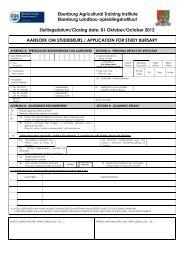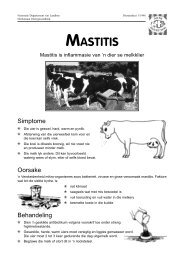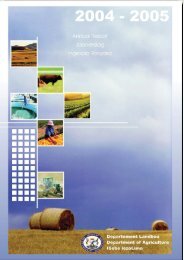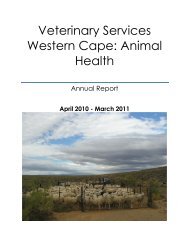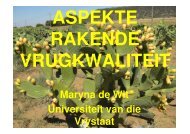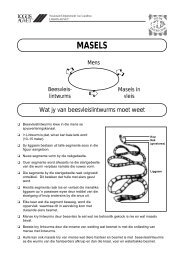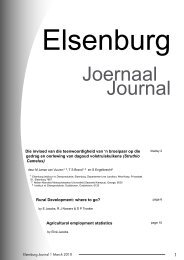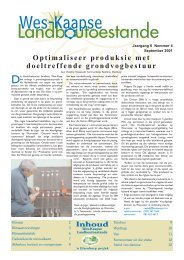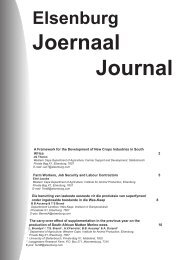honey bush tea - Department of Agriculture: Western Cape
honey bush tea - Department of Agriculture: Western Cape
honey bush tea - Department of Agriculture: Western Cape
You also want an ePaper? Increase the reach of your titles
YUMPU automatically turns print PDFs into web optimized ePapers that Google loves.
2.2.4 Herbal <strong>tea</strong>s<br />
Health awareness among consumers is underlined by the ongoing rise <strong>of</strong> herbal <strong>tea</strong>s,<br />
and to a lesser extent, fruit infusions, both <strong>of</strong> which have been marketed from a health<br />
angle. Between 1994 and 1998, herbal <strong>tea</strong>s were the most dynamic sub-sector in both<br />
volume and value terms in countries such as Italy, Spain, and the UK. In the UK alone,<br />
herbal <strong>tea</strong> sales soared by more than 16% between 1997 and 1998. The United States<br />
and Germany are two <strong>of</strong> the largest importers <strong>of</strong> herbal <strong>tea</strong> products, therefore holding<br />
large potential for South African indigenous products such as <strong>honey</strong><strong>bush</strong> and its<br />
counterpart, rooibos.<br />
During 1997, herbal <strong>tea</strong>s represented around $320 million <strong>of</strong> all US <strong>tea</strong> sales, with<br />
functional <strong>tea</strong>s comprising $80 million <strong>of</strong> herbal <strong>tea</strong> sales. In 1998, the US imported<br />
over 5 000 metric tons <strong>of</strong> plants and plant parts for use in herbal <strong>tea</strong>s, at an estimated<br />
value <strong>of</strong> around $22 million. This reflects an increase <strong>of</strong> 78% in volume and 156% in<br />
value from 1994 levels.<br />
The herbal <strong>tea</strong>s six largest import countries in terms <strong>of</strong> value are China, Chile, Taiwan,<br />
Mexico, Spain, and Germany. In 1998, China cashed in close to $7 400 000 from the<br />
US herbal <strong>tea</strong> market, compared to $3 136 000 by Chile. In terms <strong>of</strong> import volumes,<br />
China was also the largest, followed by Mexico, Chile, Germany and then India<br />
(Snyman, 2000).<br />
This is more prevalent for green <strong>tea</strong>s, as marketers observed that the market demand is<br />
calling for the production <strong>of</strong> unfermented or semi-fermented herbal <strong>tea</strong>s. This also<br />
presents a huge opportunity for <strong>honey</strong><strong>bush</strong> as the green formats are seen to yield dry<br />
green herbal <strong>tea</strong>s in which maximum levels <strong>of</strong> the original naturally occurring anti-<br />
oxidants are retained. Future prospects look good in countries such as Japan also<br />
where consumers are returning to the more traditional green <strong>tea</strong>s, not least because <strong>of</strong><br />
the growing body <strong>of</strong> evidence about the health benefits <strong>of</strong> the drink.<br />
13





